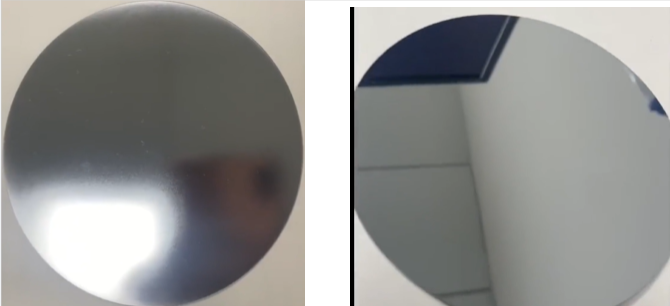Stainless steel is widely used due to its high corrosion resistance and aesthetic appeal, particularly in the fields of 3C accessories, automotive parts, medical instruments, food industry utensils, tableware, kitchenware, and decorative finishes. Notably, in the realm of electronic consumer products, components such as SIM card ejector pins, stainless steel brackets, fixtures, frames, and logos demand very high precision for their surfaces, often requiring a mirror-like finish.
This is a question that cannot be answered universally, as different stainless steel parts and surface requirements call for different polishing methods. Let's first explore the commonly used polishing techniques for stainless steel.
Mechanical Polishing
Mechanical polishing is a method that removes the protruding parts of the polished surface through cutting and plastic deformation of the material, resulting in a smooth surface. This technique typically employs tools like oil stones, wool wheels, and sandpaper, primarily through manual operation. For special components like rotational bodies, auxiliary tools such as turntables may be used. For high surface quality requirements, ultra-precision polishing techniques can be applied. Ultra-precision polishing uses specially designed abrasive tools that are pressed against the work piece's surface in a polishing liquid containing abrasives, performing high-speed rotational movements. This technology can achieve a surface roughness of Ra 0.008μm, the highest among various polishing methods. This method is commonly used for polishing stainless steel molds for optical lenses.
Chemical Polishing
Chemical polishing involves allowing the micro-protruding parts of the material to dissolve preferentially in a chemical medium compared to the recessed areas, yielding a smooth surface. The main advantages of this method are that it does not require complex equipment, can polish intricate shapes, and can polish many work pieces simultaneously, making it highly efficient. The core issue of chemical polishing is the formulation of the polishing solution. The surface roughness achieved through chemical polishing is generally in the tens of micrometers.
Electrolytic Polishing
Electrolytic polishing operates on a principle similar to chemical polishing, selectively dissolving the small protruding parts of the material's surface to create smoothness. Compared to chemical polishing, it can eliminate the effects of cathodic reactions, resulting in better outcomes. The electro chemical polishing process consists of two steps: (1) Macro-level smoothing, where dissolved products diffuse into the electrolyte, reducing the geometric roughness of the material surface to Ra > 1 μm. (2) Micro-level smoothing, where anodic polarization enhances surface brightness, achieving Ra < 1 μm.
Chemical Mechanical Polishing (CMP)
Chemical mechanical polishing combines the advantages of chemical and mechanical polishing and is currently the most commonly used method. Using specialized polishing powder for stainless steel, it can achieve CMP polishing for smartphone cases, SIM card ejector pins, buttons, and more using a planar grinding machine. This technique allows for high material removal efficiency while obtaining an excellent surface finish, achieving a level of flatness 1-2 orders of magnitude better than using either method alone, and can achieve surface roughness from the nanometer to atomic levels. Moreover, the polished mirror finish is highly reflective, continuous, and maintains good flatness.
Due to its high speed and good surface precision, CMP polishing has a series of advantages that allow for mass mechanical processing. Many of our clients in the 3C field predominantly use this CMP polishing method.
When employing CMP polishing, the first requirement is a planar grinding polishing machine, followed by polishing pads that match the size of this machine, and finally, polishing slurries that are compatible with the pads. These three components are the most critical materials in CMP polishing.
In other words, what is the best abrasive for stainless steel mirror polishing?
Through extensive on-site verification with customers, we found that sub-micron level acidic alumina slurry and steel polish powder are the most suitable for stainless steel mirror polishing. Our KN-103 stainless steel mirror alumina polishing solution utilizes alumina as the abrasive, which has a Mohs hardness of 9, while stainless steel has a Mohs hardness of approximately 5.5-7.5. Therefore, using alumina as the abrasive achieves fast and efficient mechanical polishing. By controlling the abrasive at the sub-micron level, it can create a good mirror effect on the stainless steel surface without causing scratches. Additionally, using an acidic slurry system facilitates chemical reactions on the stainless steel surface, enhancing the efficiency of chemical polishing for stainless steel mirror finishes.
